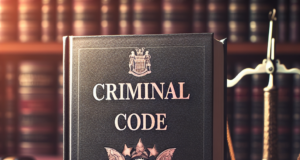In a landmark move that could reshape the landscape of the American justice system, lawmakers have unveiled a series of sweeping reforms targeting the long-criticized bail system. This initiative aims to address the systemic inequities that have plagued the current framework, disproportionately affecting low-income individuals and communities of color. As the nation grapples with the implications of these changes, a closer examination of the historical context, driving factors, and potential outcomes of the reformed bail system is essential.
Understanding the Current Bail System: A Historical Overview of Its Flaws and Challenges
The bail system in the United States has its roots in English common law, designed to ensure that defendants appear for their court dates while allowing them to remain free pending trial. However, over the decades, this system has evolved into a complex and often inequitable mechanism. Critics argue that it has become a tool for perpetuating socioeconomic disparities, as individuals unable to afford bail—often those from marginalized communities—face prolonged pretrial detention. This not only disrupts their lives but also exacerbates issues such as job loss and family instability. Furthermore, studies have shown that pretrial detention can lead to higher conviction rates and harsher sentences, raising serious questions about the fairness and efficacy of the current bail system.
Key Factors Driving the Need for Reform in the Bail System Across the United States
Several factors have converged to catalyze the urgent need for bail reform across the United States. The growing awareness of racial disparities in the criminal justice system has prompted public outcry and advocacy for change. Data revealing that Black and Hispanic individuals are disproportionately affected by bail conditions has fueled demands for a more equitable approach. Additionally, the COVID-19 pandemic highlighted the dangers of overcrowded jails, where vulnerable populations are at heightened risk of infection. Economic pressures, including the financial burden placed on families due to exorbitant bail amounts, have further intensified calls for reform. As a result, a coalition of activists, lawmakers, and legal experts has emerged, advocating for a system that prioritizes fairness and public safety over profit.
Unveiling the Proposed Changes: What the New Bail System Will Look Like
The proposed reforms to the bail system represent a significant departure from traditional practices. Central to the new framework is the elimination of cash bail for non-violent offenses, shifting the focus to risk assessment tools that evaluate a defendant’s likelihood of reoffending or failing to appear in court. This approach aims to ensure that individuals are not incarcerated solely due to their inability to pay. Additionally, the reforms include increased access to legal representation and support services for defendants, as well as the establishment of community-based alternatives to detention. These changes are designed to create a more just and equitable system that holds individuals accountable while safeguarding their rights and freedoms.
Implications of the Reformed Bail System on Defendants and Public Safety Concerns
The reformed bail system promises to have profound implications for defendants and the broader community. By removing financial barriers, individuals will have greater access to their freedom while awaiting trial, reducing the negative consequences associated with pretrial detention. However, concerns regarding public safety remain a focal point of debate. Critics argue that risk assessment tools may not adequately account for the complexities of individual circumstances, potentially leading to the release of individuals deemed high-risk. Proponents of the reform counter that the focus should be on rehabilitation and community support rather than punitive measures. As the new system is implemented, ongoing evaluation and adjustment will be crucial to address these concerns and ensure that public safety is not compromised.
Case Studies: How Similar Reforms Have Impacted Justice Systems in Other Regions
Examining case studies from regions that have implemented similar bail reforms can provide valuable insights into the potential outcomes of the proposed changes in the United States. For instance, New Jersey’s bail reform initiative, enacted in 2017, eliminated cash bail for most offenses and introduced a risk assessment system. Early evaluations indicated a decrease in the number of individuals held in jail pretrial, with no significant increase in crime rates. Similarly, California’s reforms have led to a reduction in jail populations and a growing emphasis on community-based alternatives. These examples highlight the potential for successful reform, though they also underscore the importance of continuous monitoring to address any emerging challenges and ensure that the system remains effective and equitable.
The Future of Justice: Anticipating Outcomes and Ongoing Debates Surrounding Bail Reform
As the proposed bail reforms move forward, the future of the justice system in the United States hangs in the balance. Advocates for reform express optimism that these changes will lead to a more equitable and just system, while critics remain wary of potential pitfalls. Ongoing debates surrounding the efficacy of risk assessment tools, the balance between public safety and individual rights, and the role of community support will shape the trajectory of these reforms. Furthermore, as jurisdictions across the country consider similar initiatives, the outcomes of these changes will likely influence national conversations about justice, equity, and the fundamental principles that underpin the legal system. The path ahead will require careful navigation, collaboration, and a commitment to ensuring that justice is truly accessible to all.
The unveiling of revolutionary changes to the bail system marks a pivotal moment in the ongoing quest for justice reform in the United States. By addressing the historical flaws and challenges of the current system, these proposed changes aim to create a more equitable framework that prioritizes fairness and public safety. As the nation anticipates the outcomes of these reforms, the dialogue surrounding bail and its implications for society will undoubtedly continue to evolve, shaping the future of justice for generations to come.































